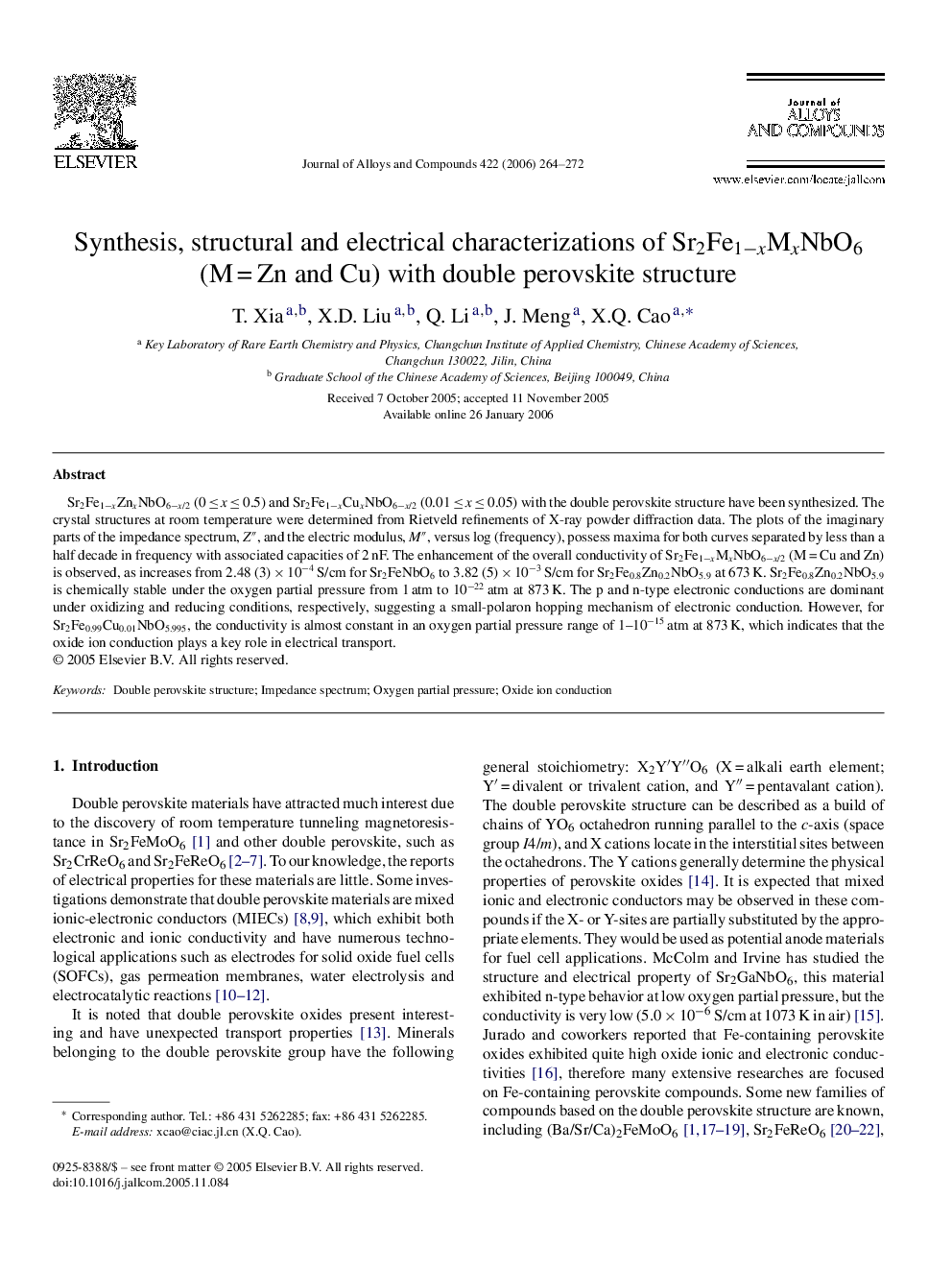| Article ID | Journal | Published Year | Pages | File Type |
|---|---|---|---|---|
| 1626962 | Journal of Alloys and Compounds | 2006 | 9 Pages |
Abstract
Sr2Fe1âxZnxNbO6âx/2 (0 â¤Â x â¤Â 0.5) and Sr2Fe1âxCuxNbO6âx/2 (0.01 â¤Â x â¤Â 0.05) with the double perovskite structure have been synthesized. The crystal structures at room temperature were determined from Rietveld refinements of X-ray powder diffraction data. The plots of the imaginary parts of the impedance spectrum, Zâ³, and the electric modulus, Mâ³, versus log (frequency), possess maxima for both curves separated by less than a half decade in frequency with associated capacities of 2 nF. The enhancement of the overall conductivity of Sr2Fe1âxMxNbO6âx/2 (M = Cu and Zn) is observed, as increases from 2.48 (3) Ã 10â4 S/cm for Sr2FeNbO6 to 3.82 (5) Ã 10â3 S/cm for Sr2Fe0.8Zn0.2NbO5.9 at 673 K. Sr2Fe0.8Zn0.2NbO5.9 is chemically stable under the oxygen partial pressure from 1 atm to 10â22 atm at 873 K. The p and n-type electronic conductions are dominant under oxidizing and reducing conditions, respectively, suggesting a small-polaron hopping mechanism of electronic conduction. However, for Sr2Fe0.99Cu0.01NbO5.995, the conductivity is almost constant in an oxygen partial pressure range of 1-10â15 atm at 873 K, which indicates that the oxide ion conduction plays a key role in electrical transport.
Related Topics
Physical Sciences and Engineering
Materials Science
Metals and Alloys
Authors
T. Xia, X.D. Liu, Q. Li, J. Meng, X.Q. Cao,
